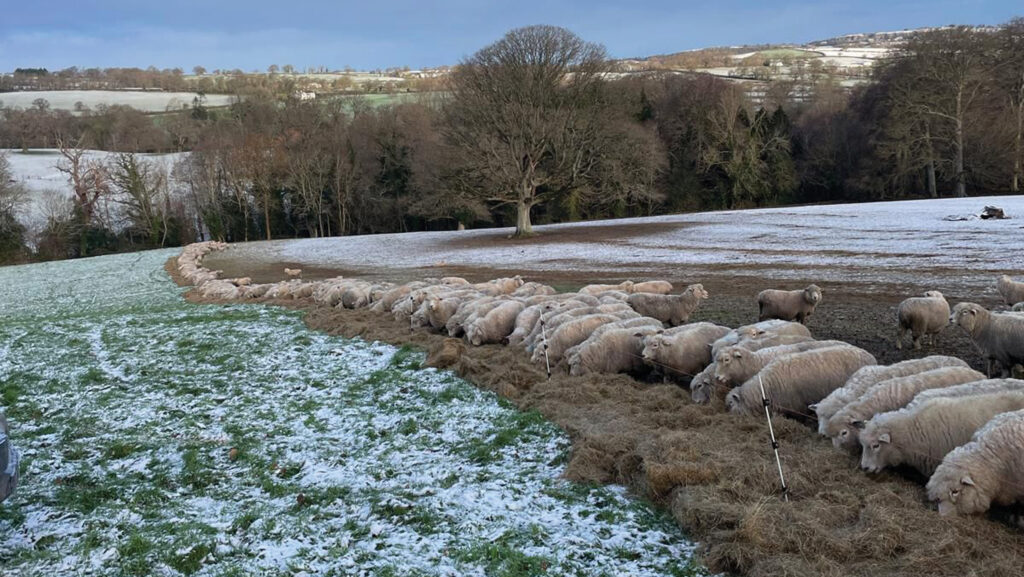How stockpiling and bale grazing have slashed feed costs
 © Dafydd Owen
© Dafydd Owen Stockpiling grass and bale-grazing ewes during winter have reduced variable costs by 40% at Coed Coch Farm, near Conwy.
The 2,000 New Zealand Romney ewe enterprise is a joint venture between estate owners Davina and Harry Fetherstonhaugh, Rhys Williams and Dafydd Owen, who oversees day-to-day management.
See also: 8 ways sheep farmers can adopt regen methods
Profit and sustainability are equal ambitions, with ewes running over 300ha of land (currently in regenerative transition) and lambed outdoors in April.
Previously, in-lamb ewes were grazed on tack, or outwintered on a combination of grass, forage crops and silage.
But with a keen eye on costs, Rhys wanted to explore bale-grazing and deferred grazing as a way of reducing winter feeding costs.
“There’s no free labour here. Making a profit was my priority, but I found it also ticks the boxes for soil health,” he explained.
For five years, the business has been minimising variable costs. Purchased feed and inorganic fertiliser have been eliminated, and the team is now addressing how to establish and renew forage crops.
Rhys estimates stockpiling grass is saving £1,000/ha, compared to sowing a fodder crop and reseeding with grass the following spring.
He reckoned this wintering method has minimal direct costs aside from the lost opportunity costs of taking pasture out of production.
Farming system
“It needs to fit into your farming system. If we were very heavily stocked, it would be more challenging to take significant areas out of production during the growing season.”
In total, 25ha were closed at the end of June; a proportion cut for haylage, and the bales placed in situ in rows, while leaving the remaining grass to regrow.
This grass and bales were strip-grazed in January and February, with ewes given two days’ feed at a time.
Rhys estimated that ewes ate about 40% of each bale. The remaining silage was trampled back into the soil, building organic matter and naturally reseeding pasture.
“Utilisation of the stockpiled, standing grass was excellent,” he adds.
The longer rest period improved water infiltration rates and ewes were happy.
“I was amazed how content the ewes were – they were more content than ewes on silage and swedes – and how little damage they made,” he said.
About 20% of old ewes had to be preferentially fed on forage crops. This year, no forage crops will be grown.
Instead, 20% of the farm will be closed for stockpiling to feed 1,000 ewes for 80 days, and the remaining ewes will go away on tack.
